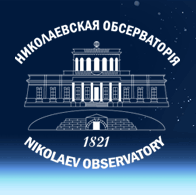| Reference system in astronomy |
|
2010-11-02 16:45:01
Astrometry is the branch of astronomy that involves precise measurements and explanations of positions and movements of stars and other celestial bodies. To be more strict, “Astrometry is the branch of science that creates a reference inertial coordinate system and a coherent set of fundamental astronomical constants implementing the connection of this system with the Earth using the determination of coordinates of celestial bodies and Earth's rotation research.”[1] The Reference coordinate system is implemented in the catalog of precise positions of selected objects. Until 1997, stars were such reference objects. However, the use of stars as a reference system is connected with a decision of the complex question of determining proper motions of the stars. There are such classes of distant objects as radio galaxies and quasars in the Universe. They have strong radio emission being almost stationary for an observer in the Solar System at the same time. Their positions were determined by the Very Long Baseline Interferometry (VLBI), with a high accuracy in comparison with other methods. In 1997 this fact had allowed the astronomers to move to a new high-precision reference system of celestial coordinates, axes of which were fixed on the celestial sphere with the help of the catalog of extragalactic radio sources. This system was called the ICRS - International Celestial Reference System. The start point of the ICRS is located in the barycenter of Solar system (the center of mass). As an initial implementation of the new reference coordinate system the catalog of positions of 608 extragalactic radio sources ISRF - International Celestial Reference Frame was adopted. ISRF2 catalog, which supports the ISRS grid on the celestial sphere since January,1, 2010, includes high-precision positions of 3414 extragalactic objects. The connection with the original directory ISRF is carried out by 138 general extragalactic sources. To maintain the high accuracy and stability of the reference system, this catalog is constantly controlled and changed. In fact, the ICRS system is independent from the optical system of coordinates (the only common point is zero-point for right ascension, which corresponds to the right ascension of quasar 3C 273V). Therefore, its use for observations of objects in other regions of the spectrum (especially in the optical) requires solving the problem of the spread of the reference system to another band waves. This fact makes the task of coordination and supporting of optical and radio coordinate systems extremely important for providing a unified coordinate system in astronomy. The successful completion of the Hipparcos space mission (1989-1993) led to the creation of high-accurate catalogs of stars positions - Hipparcos and Tycho. The Hipparcos catalog contains 118218 stars up to 12.5 magnitude, the accuracy of the positions, the proper motions and parallaxes are equal to 1 mas (millisecond of arc), the density of stars on the celestial sphere is 3 stars per square degree. Tycho Catalogue, consists of 1058332 positions of stars, the accuracy - from 7 to 25 mas; density of stars is 26 per square degree. According to the recommendations of the International Astronomical Union (IAU), the modified system of Hipparcos catalog is called the Hipparcos Celestial Reference Frame (HCRF). It is the primary realization of the ICRS in the optical spectrum. Up to date, the coordination of two systems (optical and radio) is reduced to determining the angles of mutual orientation of axes. It is important to have common objects for which the position and proper motion for observations in optical and radio wavelengths are known. One way around this problem is the determination of coordinates of extragalactic radio sources in the HCRF system. It is commonly known that Hipparcos catalog contains only bright objects, and the majority of extragalactic radio sources has very faint magnitudes, which require using large astrophysic telescopes for their observations. During 2000-2006 years, Nikolaev Observatory participated in the international project on the determination of the relative orientation of optical and radio coordinate systems. The astronomical institutions of China (Shanghai Observatory), Russia (Kazan University), Turkey (National Observatory, Turkey) and Ukraine (Nikolaev Astronomical Observatory) were involved to this project. Optical observations of 300 extragalactic radio sources from ICRF list were calculated and obtained using the RTT150 telescope ( mirror diameter 1.5 m, Turkey, Mount Bakyrlytepe) and Telescope from Yunnan Observatory (1 m mirror diameter, China). The obtained differences of optical and radio positions were used to control and refine the relative orientation of the optical and radio coordinate systems. The results showed no significant differences between the systems at the level of accuracy of 4 - 5 milliarcseconds [3, 4]. It should be noted that the direct use of high-precision cosmic Hipparcos and Tycho catalogs for determination of the positions of radio sources is impossible due to the low density of stars in these catalogs. Therefore the important task in this direction is to extend the HCRF system to region of faint stars. In addition, the proper motions of stars, that were determined with the help of spacecraft in a short period of observation, showed significant discrepancies with the ground proper motions determined using distant epochs. The remarkable event of modern astrometry was the creation of Tycho2 catalog (2539913 stars) – the result of the combination of positional data of the Tycho experiment and more than 140 ground-based catalogs of the 20th century for the determination of proper motions. Using the Tycho2 catalog as a reference allows us to expand HCRF up to 17 magnitude in the optical and infrared wavelengths. Such catalogs as UCAC3 [10], CMC14 [6] and 2MASS [7] should also be noted as high-accurate. Despite the fact that the potential accuracy and limiting magnitude which are achieved by space astrometry cannot be compared with the ground-based astrometry, the role of ground-based astrometry consists in the addition of these observations in areas where "space" contribution is negligible or non-existent. The comparison of the "instant" (obtained with the help of space astrometry) and "ground" values of stars proper motions gives an additional information about the physical nature of studied objects, and allows to make a suggestion of presence or absence of invisible component. As a matter of fact, the high cost and limited terms of spacecrafts make it impossible to solve problems related to understanding the kinematics and dynamics of our Galaxy, which require massive accurate determinations of the proper motions of stars and their parallaxes. Stars with large proper motions represent the specific interest for astronomers. Primarily it is due to the fact that these stars are relatively close to the Sun. This allows to use them for tasks such as specification of our Galaxy model, the location of Sun there, the definition of structural features and evolution of different galactic subsystems. A large percentage of stars with big proper motions are stars of low luminosity (white, red and brown dwarfs), which allows astronomers to use them for searching and studying of stars with unseen companions. Because of quick change of position of these stars on the background of more distant stars, they can also act as a lensing objects during the high-space experiments. Ground-based observations may help in the problem of prediction of these phenomena, their probability of occurrence and duration. Nowadays, in the framework of fundamental research work “Refinement of the kinematic parameters of stars and stellar subsystems of the Galaxy based on CCD observations of selected zones” the regular observations of stars with high proper motions are conducted using Nikolaev Axial meridian circle. The research work on this topic have begun in 2010 and it will be carried out till 2012. Head is a director of the RI NAO Professor G. Pinigin Lliterature:
1. Подобед В.В., Нестеров В.В. Общая астрометрия . – М.: Наука. Главная редакция физико–математической литературы, 1982. – 576с. |

Науково-дослідний інститут
Миколаївська астрономічна обсерваторія
Міністерство освіти і науки
Миколаївська астрономічна обсерваторія
Міністерство освіти і науки

 |
 |
 |